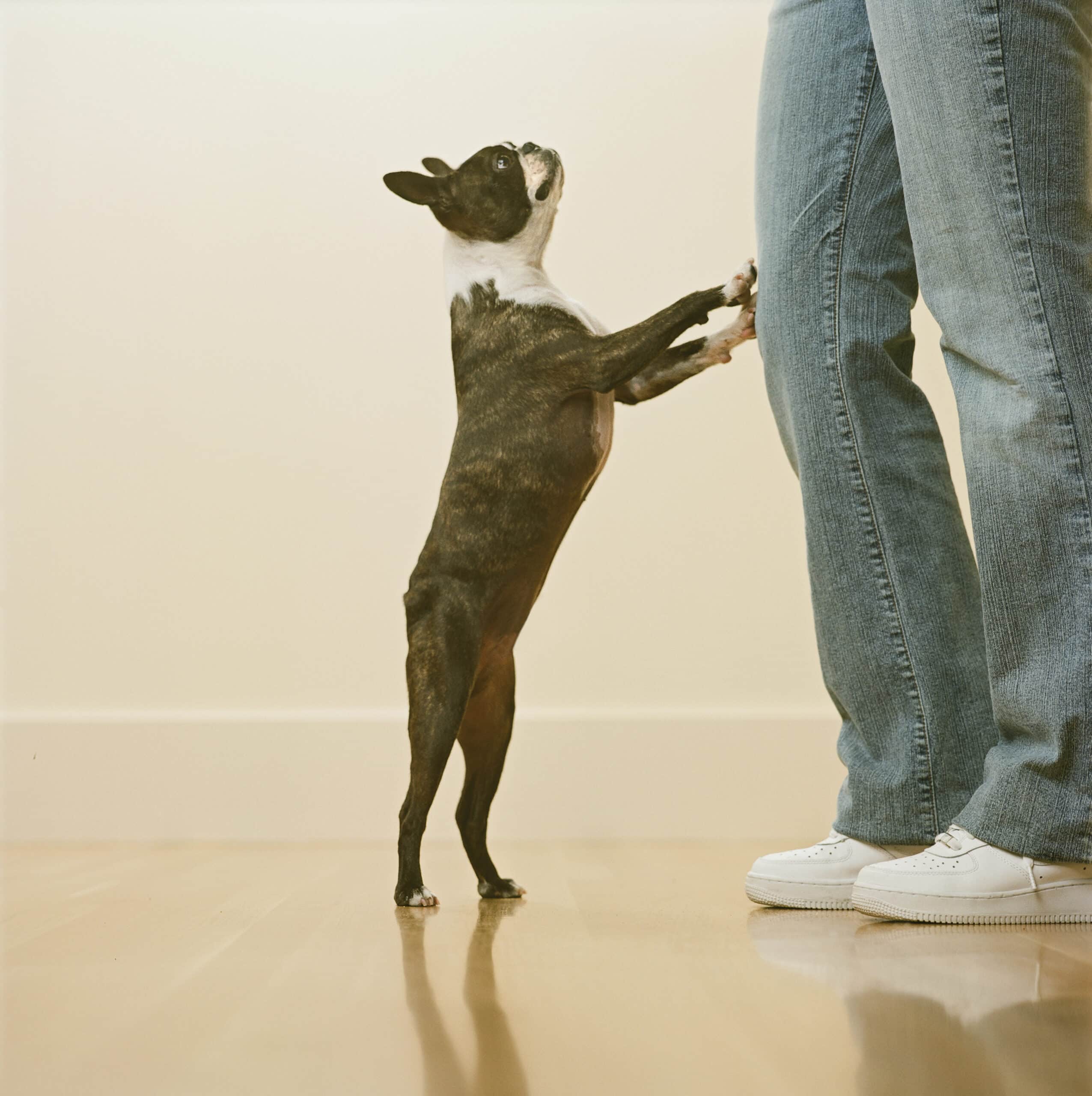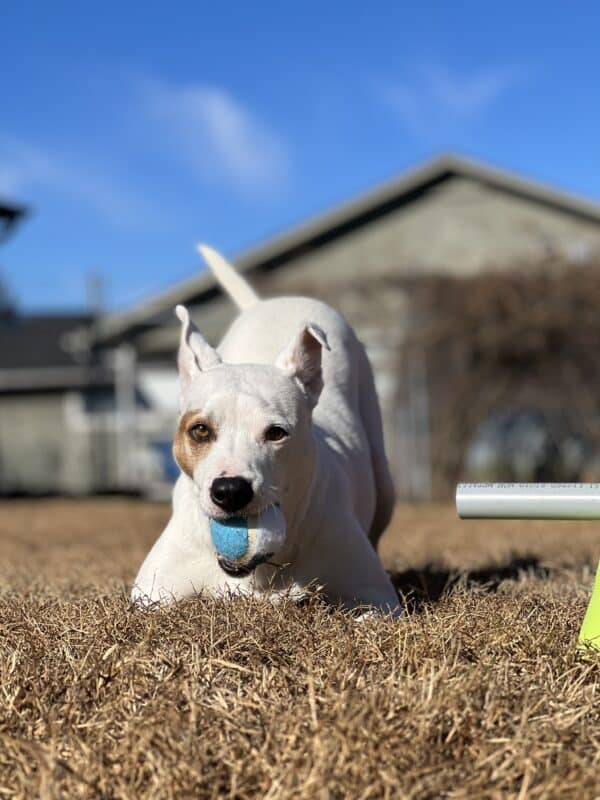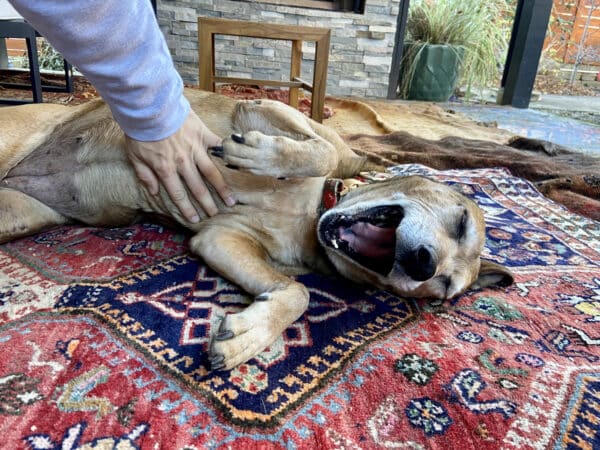Dog behaviors may be puzzling to us, but they are typically a direct form of communication for your pup. You just need to be his detective and figure out what he’s trying to tell you.
Here are the 11 main reasons your dog stands on you:
- Seeking attention while you’re binge-watching a series or looking at your phone.
- You’ve rewarded the behavior. Inadvertently, you may have previously praised or given treats to you pup when he stands on you. This often happens when there’s a small dog or puppy, when the behavior is seen as being cute.
- Is it dinner time?
- He wants to play. Stepping on you and pawing at you — even initiating a play bow — are his way of starting the play session.
- Anxiety from sights and sounds in the environment, such as a motorcycle barreling through or a thunderstorm. He feels safer with you, so he stands on your foot or crawls onto your lap.
- Cuddle time. If you’re lying on the couch, he may climb onto your lap to snuggle. You’re bonded and your sweet pup trusts you and seeks your affection. He enjoys the physical warmth.
- Separation anxiety. If you have a Velcro dog who can’t be apart from you, he may have separation anxiety.
- Your dog is sick. He may be trying to communicate with you that he doesn’t feel well.
- You are sick. Our dogs can read our scent and body language. So your pup may be trying to communicate that you are sick.
- To wake you up. It’s time to rise and shine!
- Feeling protective of you. He may stand on you to safeguard you against others.
Ways to discourage your dog from standing on you
By standing on you, your dog is trying to communicate something. He is not attempting to be dominant. Still, this is a behavior that we want to resolve. Here are the steps to take:
- Go to the vet. Take your dog to the vet to make sure that nothing physical is wrong.
- Stick to a daily schedule. Dogs do great with routines. So have regularly scheduled times to feed, play, train, walk and relax with him.
- Train your pup. By teaching him good manners, he will learn your rules and have confidence in his world.
- Socialize your dog. Getting him used to all the sights, sounds and situations that he needs to face will increase his confidence level and reduce any anxiety.
- Redirect to another activity. Play a game with him or have him work on activity toys.
- Reward an alternate behavior. If you see your dog sitting or lying down — not on you — praise and reward him.
- Teach your dog to respect personal space. Teach him to go to a place such as a dog bed and lie down and stay there.
- Get professional help. If you’ve tried other methods to stop your dog from standing on you and failed, get the help of a behaviorist or positive reinforcement trainer with experience with the issue.
Your dog may like to stand on you for many reasons. Maintain a routine where your dog receives enough physical and mental exercise, socialization, manners training and attention from you. After you’ve eliminated any physical or behavioral issues, just enjoy any cuddles if you want them or redirect your dog to another activity.






